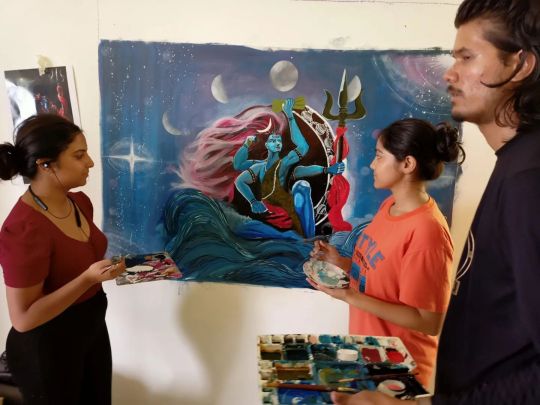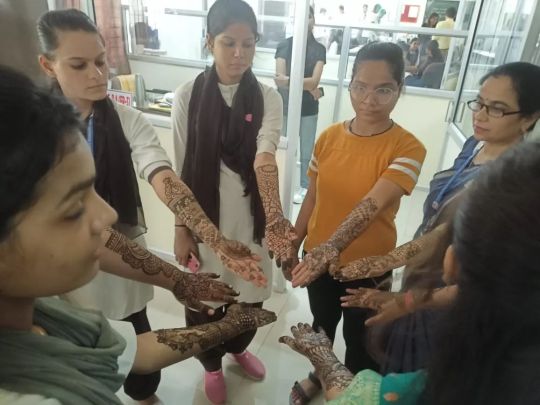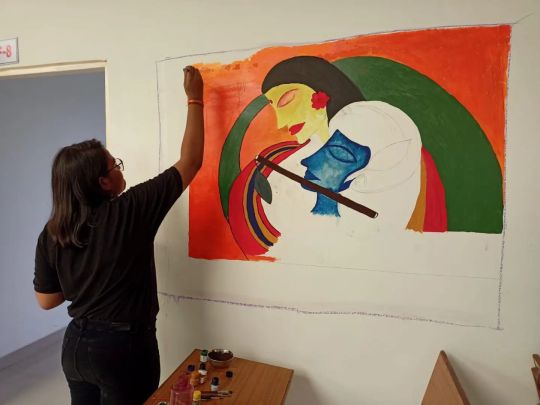#sagar institute
Text

Deepali Raghuwanshi Student of SIRT's Computer Science & Engineering for getting placed in Cognizant
#campus selection#campus placement college in bhopal#computer science and engineering#cognizant#engineering#engineering college#SIRT Bhopal#Sagar Institute of Research & Technology
0 notes
Text
#import export course in ahmedabad#onlineexim#hiiem#import export institute in ahmedabad#import export consultant#import export institute#import export business#import export course#logistics in gujrat#100% placement#sagar agravat#import export logistics
0 notes
Text
A Major Coaching Place in Chandigarh- Gyan Sagar Institute

Visit the Gyan Sagar Institute; we are here to help you realize your dreams. Gyan Sagar is Chandigarh's finest coaching establishment. We provide specialized batches, qualified professors, and results that are certain to be successful for all official exams. Simply visit our website.
#best coaching center in chandigarh#coaching institute in chandigarh#gyan sagar insitute#bestcoaching
0 notes
Photo

Get complete details about one of the top Polytechnic institutes in Bangalore. Check out complete details and contact us for FREE admission guidance!
0 notes
Text
Today’s education, politics, science, medicine, and media have failed us. Pandemic policy has changed the rules and distorted the truth.
Like you, I am always hopeful of better times ahead – changed minds, enlightened government decisions, court battles won, compensation paid, and safeguards restored – but we have not been through a minor glitch in the course of our long history, it has been a major catastrophe. We have crossed into uncharted territory.
By Dr. Guy Hatchard

Those in the majority are in authority and they are unlikely to blame themselves or doubt their own wisdom
Take this Twitter thread encouraging masking, the main takeout seems to be “glue your mask to your face.” This is not even parody and ignores the results of recent studies on the dangers of mask-wearing.
Or this alarming tweet about mRNA vaccines in plants and animals entering our food supply unlabelled.
Or this letter from Rob Zorn, Communications Advisor of the New Zealand Nurses Organisation, falsely claiming that “the choice not to vaccinate [against covid] has serious potential repercussions for the wellbeing of others.”In fact, the latest research points squarely to the harms of covid vaccination, including unprecedented rates of excess all-cause mortality continuing to disproportionately affect the highly vaccinated (see HERE or HERE for example).
Or THIS article reporting the continuing relentless efforts to permanently exclude doctors who sounded a note of warning about covid vaccine safety. This is going on all over the world driven by commercial pharmaceutical interests.
Or THIS paper published by the National Institutes of Health (“NIH”) announcing that all 23 participants with neurological damage following covid-19 vaccination recovered. In fact, they didn’t all recover. To reach their misleading conclusion, the authors changed the meaning of “recovery” from that commonly used. Watch THIS earth-shattering video from Dr. Mobeen Syed who interviews one of the participants who explains she still has to undergo an invasive medical procedure every two weeks costing $3,500 and remains incapable of work. Yet the study falsely claims her condition is “resolved.”
The common thread joining all of the above is the rejection of obvious truth and precautionary science, followed by an attempt to manipulate public opinion to develop the acceptance of fallacy as truth, and fact as conspiracy theory.
Many who are concerned are advocating political solutions or applications to the courts, but if we imagine we will be welcomed, believed, listened to, or helped when we go cap in hand to politicians, the courts, medical authorities, or the media asking for justice or truth, we are misplacing our trust. At this point in time, it is easy to despair of progress. It seems we have to find another way ahead.
Technology has overtaken the natural order at the core of existence
In every ancient culture there are myths that warn against upsetting the natural order. Icarus who flew too close to the sun, Actaeon who should not have pursued Artemis, or the sons of Sagar who delved too deep into the earth and upset the four mythic elephants who supported it. All these myths and many others point to a need to refrain from interfering with fundamental principles of natural law or usurping their power and authority.
There are three foundational principles of life unknown in antiquity that have become vulnerable to modern technology:
The Cell with its genetic core, the very basis of life.
EMF Communication Frequencies, identical with those used by physiology to precisely guide developmental biology and the brain
Atomic Nuclei whose chain reactions can destroy planets
Add to these a fourth, well-known to all cultural traditions:
Truth – the basis of communication, order, and progress
The huge extent of adverse effects through the misuse of these four is overtaking civilisation and threatening universal destruction. One way forward into the future is to outlaw their manipulation. Many including GLOBE are rightly calling for this. It is urgent, time is running out.
Dangerous biotechnology experimentation is rapidly expanding and its effects can’t be recalled. Nuclear technology including weaponry is proliferating. EMF radiation is intensifying and the authorities are not even bothering to research its effects.
We have discussed these first three in the pages of our frequent reports, but remember it was the manipulation of truth that opened the door to their misuse.
Whilst artificial intelligence (“AI”) is hitting the headlines because of its ability to produce fake documents at the drop of a hat, the principles of AI have been deployed with slightly less sophistication for decades by governments and commercial enterprises to sell their products and policies. Especially damaging has been the constant assertion of public safety in the absence of any confirming data – a denial of truth and precautionary science.
Just step into any topical controversy and you encounter the politicisation of science and the distortion of truth. For example, very young people are being told they can transition their gender. In reality, gender is determined by genetics. Surgical and chemical methods to alter physiological characteristics of gender inevitably set up a conflict between the underlying genetics and the altered physiology and biochemistry. This is now known to cause severe physical and mental health problems, yet governments are promoting procedures for children who don’t yet have the developed mental capacity to consider the implications. We now know these include serious problems and adverse effects, including sterility and loss of sexual function. Yet proponents are denying the fundamental impossibility of altering gender and hiding the appalling consequences of trying to do so.
The motivations behind this are hard to fathom completely, but they certainly include the monetary incentives enjoyed by surgeons and gender specialists who provide their dangerous experimental services to the young. Controlling the distortion of truth in any field requires more rigid policing of conflicts of interest among government advisors. It must also include the removal of financial incentives to lie or hide the truth.
The source of truth is our own consciousness. The denial of obvious truth disconnects the perpetrator from their own source and causes psychological damage to both the speaker and the listener, the deceiver and their victim. This is a principle recognised throughout the ages, a principle that in today’s world urgently needs restoration and revival. The dire situation we are facing everywhere in the world cannot be righted without restoring truth.
Fortunately, it is everywhere known that truth is powerful. The Mundaka Upanishad affirms “truth alone triumphs,”the Bible promises that “the truth will set you free.” and Shakespeare echoes “truth will out.”
In my book ‘Your DNA Diet’, available from the Hatchard Report, I discuss the contribution of Ayurveda to health, truth and knowledge. Meditation is a technology of consciousness promoted by Ayurveda which, unlike genetic, electromagnetic, or nuclear technologies, does not upset the natural order, it restores it. Meditation has an ancient pedigree; it has served as an important element of many civilisations. If quiet reflective methods of establishing our connection with silent consciousness, the basis of truth, are forgotten, civilization can fail. If this happens, the only way forward is the revival of knowledge. At this point in time, we urgently stand in need of revival.
About the Author
Guy Hatchard, PhD, was formerly a senior manager at Genetic ID a global food testing and safety company (now known as FoodChain ID). You can subscribe to his websites HatchardReport.com and GLOBE.GLOBAL for regular updates by email. GLOBE.GLOBAL is a website dedicated to providing information about the dangers of biotechnology.
3 notes
·
View notes
Text

Pharma Green City
Hyderabad Pharma City, is the “world’s largest pharmaceuticals industrial park” being established near Hyderabad, India by the Government of Telangana. Spread over 19,000 acres, the Park is touted to be biggest of its kind industrial cluster for the pharmaceuticals for pharmaceutical companies in manufacturing and development needs. Pharama City in Hyderabad is increasingly being considered as one of the best areas for real estate investment. This area offers the most affordable due to its developmental stage, the prices of property in Pharma City are still affordable compared to its neighbouring suburbs. This area is as a result deemed as the best investment option for investors with a small budget.
Very Near to Nagarjuna Sagar Highway
Very Near to Pharma City @19,333 Acres
Very Near to Amazon Data Center Campus @150 Acres (5809 Crores Investment)
Near to Eliminedu Aerospace @500 Acres
Near to Adibatla IT Hub and Aerospace @2500 Acres
Near to Proposed Regional Ring Road
Near to BDL, BEL, NSG, Octopus
Near to Ranga Reddy Collectorate office
Near to International Airport
Near to Many Educational Institutions
#hyderabad#propertyforsale#plot for sale#smartbusiness#farmland#marketing#telangana#property#realestate#farmlands
4 notes
·
View notes
Photo

It was an extreme pleasure and an honor for Arun Pandit ® Co-founder of Hyphen SCS to share my limited experience and learn from the invaluable experience of fellow panelists and industry veterans Srinivasan Arunachalam, Head – Purchase for India Region, Saint-Gobain, Murali S, Operations Director South, Vodafone Idea Limited, and Maheswaran Ganapathy, Managing Director, Qwixpert Consulting at Daksha 2022 - Leadership Conclave of Indian Institute of Management Tiruchirappalli .
The session was moderated by the extremely passionate and ever-learner Prof. Sirish Gouda.
The session was enriched with multiple insights, best practices, industry and leadership wisdom, and also some rarely known tricks of the trade from these eminent leaders.
We would like to thank Abhinav Srivastava, Ameya Karambe- HR, Anubha Batra, Ashwini Shami, Debashish Ghosh, and Dr. Nidhi Gadkari (She/Her). Dr.Manivannan Md Dnb, DU Venkata Ramanan, Kiran Steven, Madhav Goel, Maheswaran Ganapathy, Mehak M, Murali Paleti, Pradeep Chenthilkumar, Capt Pranav Prasoon Thakur, Raj Raghavan, Sagar Aluri, Sai Gopal, Samir Shah, Sandeep Gupta (He/Him/His), Sanjiv Bhasin, Sohrab Bavaria, Sridharan Rangaraj, Srikanth Rao, Srinivasan Arunachalam, Tony Simon, Umanath Kumar and Vikas Maheshwary for sharing your learnings.
Visit hyphenscs.com to know more!
#IIMTrichy #Daksha2022 #Leadershipconclave #Businessconclave #paneldiscussions #roundtablediscussions #meetandgreet #Operations #SupplyChain #ResilientSupplyChain #operationsmanagement #arunpandit #hyphenscs #startup #Startupindia #startupdiary #scm #optimization #operations #panelist #speaker #warehousing #logistics #supplychains #leadership #supplychainmanagement #india #fulfilment #management #change #thankyou #hr #experience #share #leaders #consulting #delhi #veterans
Hyphen SCS OPsigma - The Operations and Supply Chain Club, IIFT Delhi Indian Institute of Management Tiruchirappalli
2 notes
·
View notes
Text
Shaping Tomorrow: Trends Reshaping BCA Education
In the dynamic realm of BCA education, innovation paves the path forward. As technology evolves, so does the curriculum, with institutions like Dayananda Sagar College of Arts, Science, and Commerce leading the charge. The future of BCA education is marked by trends like interdisciplinary studies, emphasizing soft skills alongside technical prowess. Virtual labs offer hands-on experience, transcending physical boundaries. Project-based learning fosters practical application, enhancing employability. Furthermore, personalized learning through AI algorithms tailors education to individual needs. As the landscape evolves, institutions embracing these trends empower students to thrive in the digital age.
0 notes
Text
Venkateshwara Group of Institutions held a poster making competition in celebration of World Environment Day.




On the occasion of World Environment Day, the Pharmacy department at the Venkateshwara Group of Institutions organized a poster making competition.
The Venkateshwara Group Founder President Dr Sudhir Giri, Pro Chancellor Dr Rajeev Tyagi & the Campus Director Dr Pratap Singh inaugurated the event by lighting a lamp to Goddess Saraswati.
The students of D Pharma & B Pharma took part in the poster making competition.
Mayank, Udit Singh, and Sagar won the first prize for their outstanding painting. While Ishar, & Mansi grabbed the second prize, followed by Tamanna & Sangam, who came third.
The College Management felicitated the winners for their excellent performance.
Among those in attendance were Dr. Pratap Singh, the Campus Director, Dr. Sundar Singh, Nidhi Singh, Ritu Verma, Anupama Patel, Sonali Rastogi, Dheeraj Kataria, Gaurav, Pankaj, Ankur, and Ravi Kumar, along with others present.
0 notes
Photo





Art and Craft Carnival 2K22
An Art and Craft Carnival 2K22 under AICTE Scheme, SPICES was organised by Sagar Group of Institutions at SIRTS-Pharmacy, Bhopal on 3rd Aug 2022. The Kalpana club of SAC organized Inter College competitions in different Art and Craft Activities. The number of participants was around 200 as students from every college were actively involved in this event.
Many competitions were organised like Face painting, Tattoo making, Mehndi, Rangoli, Wall painting, T-shirt painting, cloth painting, glass, and bottle painting, Sketching and Doodle art, etc.
#art#craft#carnival#art and craft activities#Face painting#Tattoo making#mehndi#Rangoli#Wall painting#T-shirt painting#Sketching#Doodle art
3 notes
·
View notes
Text
#import export course in ahmedabad#iiiem#onlineexim#import export institute#sagar agravat#logistics#import export consultant#import export business#certified program#100% placement#global trade#international business
1 note
·
View note
Text

best Coaching Institute In Chnadigarh. we are providing Best study metrial in Chandigarh For Govt Jobs.
0 notes
Text
MBBS in Madhya Pradesh: An Overview

Madhya Pradesh, located in the heart of India, offers a range of esteemed medical colleges for students aspiring to pursue an MBBS degree. The state boasts several reputable institutions, equipped with modern facilities, experienced faculty, and comprehensive curricula. This guide provides an overview of some notable medical colleges in Madhya Pradesh, their courses, fee structures, and admission procedures.
Prominent Medical Colleges in Madhya Pradesh
1. LNCT Medical College and Sewakunj Hospital, Indore
LNCT Medical College and Sewakunj Hospital in Indore are renowned for their high academic standards and state-of-the-art infrastructure. The college offers an MBBS program designed to provide students with a solid foundation in medical sciences and practical experience.
2. Sukh Sagar Medical College and Hospital, Jabalpur
Sukh Sagar Medical College and Hospital in Jabalpur is dedicated to producing competent medical professionals. The institution focuses on both theoretical knowledge and hands-on clinical training, ensuring students are well-prepared for their medical careers.
3. R.K.D.F. Medical College & Research Centre, Bhopal
R.K.D.F. Medical College & Research Centre in Bhopal is known for its comprehensive MBBS program, which combines rigorous academic coursework with practical clinical training. The college is equipped with modern facilities and experienced faculty members.
4. Ram Krishna Medical College Hospital and Research Centre, Bhopal
Ram Krishna Medical College offers a dynamic MBBS program that emphasizes research and clinical practice. The college provides a conducive learning environment with access to advanced medical technology.
5. Amaltas Institute of Medical Science, Dewas
Amaltas Institute of Medical Science in Dewas is a premier institution offering an MBBS program focused on holistic medical education. The institute ensures students receive a balanced education comprising both theoretical and practical aspects of medicine.
6. Index Medical College, Indore
Index Medical College in Indore is known for its quality education and excellent clinical training facilities. The college offers an MBBS program that prepares students for the demands of the medical profession through rigorous academics and practical experience.
7. Sri Aurobindo Institute of Medical Sciences, Indore
Sri Aurobindo Institute of Medical Sciences (SAIMS) in Indore is a prestigious medical college offering a well-rounded MBBS program. The institute boasts a robust infrastructure, experienced faculty, and comprehensive clinical training facilities.
8. Ruxmaniben Deepchand Gardi Medical College, Ujjain
Ruxmaniben Deepchand Gardi Medical College in Ujjain provides a thorough MBBS program that combines academic excellence with practical training. The college is known for its research-oriented approach and modern infrastructure.
9. Peoples College of Medical Science, Bhopal
Peoples College of Medical Science in Bhopal offers an MBBS program designed to create proficient medical professionals. The college focuses on both the academic and practical aspects of medical education, supported by experienced faculty and advanced facilities.
10. LN Medical College, Bhopal
LN Medical College in Bhopal is a top-tier institution offering an MBBS program that includes comprehensive coursework and extensive clinical training. The college is well-regarded for its commitment to academic excellence and modern medical education.
Courses, Fee Structure & Admission Procedure:
Courses: MBBS
Fee Structure: Varies annually; approximate fees range from INR 6-12 lakhs per year.
Admission Procedure: Admission is based on the National Eligibility cum Entrance Test (NEET) score. Students must meet the eligibility criteria and participate in counseling sessions conducted by the Directorate of Medical Education, Madhya Pradesh.
11. Chirayu Medical College and Hospital, Bhopal
Chirayu Medical College and Hospital in Bhopal offers a robust MBBS program with a focus on providing high-quality medical education and training. The institution is equipped with modern facilities and provides students with ample opportunities for hands-on clinical experience.
Conclusion
MBBS in Madhya Pradesh is home to several prestigious medical colleges that offer comprehensive MBBS programs. These institutions provide students with the necessary knowledge, skills, and practical experience to excel in the medical field. With a combination of rigorous academics, advanced facilities, and experienced faculty, these colleges ensure that graduates are well-prepared to meet the challenges of the healthcare industry.
#MBBS in Madhya Pradesh#Study MBBS in Madhya Pradesh#MBBS Fees in Madhya Pradesh#Best Medical University in Madhya Pradesh#Medical Colleges in Madhya Pradesh for Indian Students#MBBS Admission in Madhya Pradesh#Madhya Pradesh MBBS
0 notes
Text
Cyclone Remal Leaves Trail Of Destruction In Bengal, 2 Dead In Bangladesh
Severe cyclonic storm Remal made landfall between the coasts of West Bengal and Bangladesh, unleashing winds up to 135 kmph. The storm, which struck between Sagar Island and Khepupara near the southwest of Mongla in Bangladesh at 8:30 pm on Sunday, brought torrential rains, flooding homes and farmlands, leaving widespread destruction in its wake.

Two people were killed in Bangladesh since the cyclone made landfall last night, said an official from the country's disaster ministry. West Bengal has reported no casualty so far.
Ahead of the storm, disaster management authorities and security forces across Bengal and northeastern states were placed on high alert. District administrations in Assam, Meghalaya, Tripura, Manipur, and Mizoram were instructed to take precautionary measures to mitigate the impact.
Cyclone Remal disrupted air, rail, and road transportation in Kolkata and southern Bengal. The Eastern and South Eastern Railways cancelled several trains, and the Netaji Subhas Chandra Bose International Airport in Kolkata suspended flight operations for 21 hours, affecting 394 flights. The airport resumed operations at 9 am today. The Syama Prasad Mookerjee Port in Kolkata also halted operations.
In the city's Bibir Bagan area, a wall collapsed due to heavy rain injuring one person. Reports from North and South 24 Parganas and East Midnapore districts indicated extensive damage to thatched roofs, electric poles, and trees. Low-lying areas near Kolkata experienced severe flooding.
The Assam State Disaster Management Authority (ASDMA) issued warnings of extremely heavy rainfall across Assam and other northeastern states on May 27 and 28. Orange and Red alerts were issued for various districts, anticipating severe weather conditions. Squally winds of 40-50 kmph, gusting to 60 kmph, were expected over south Assam and Meghalaya.
The Meghalaya government advised residents to prepare emergency kits, avoid unnecessary travel, and stay updated with weather reports. Tripura's government closed all educational institutions on May 27 and 28 and suspended flight operations on the Kolkata-Agartala route until Monday morning.
Cyclone Remal damaged fragile dwellings, uprooted trees, and toppled electric poles. In the Sundarbans' Gosaba area, one person was injured by debris. Over one lakh people were evacuated from vulnerable areas in West Bengal before the cyclone struck.
The West Bengal government evacuated approximately 1.10 lakh people from coastal and vulnerable regions to cyclone shelters and other safe locations. Evacuations focused on South 24 Parganas, particularly Sagar Island, Sundarbans, and Kakdwip.
Prime Minister Narendra Modi chaired a meeting to review the storm response, while West Bengal Governor CV Ananda Bose monitored the situation closely. Bengal Chief Minister Mamata Banerjee urged residents to stay indoors, assuring them of governmental support.
The Kolkata Municipal Corporation (KMC) has mobilised 15,000 civic employees to manage post-cyclone recovery, including the quick removal of uprooted trees.
The India Meteorological Department (IMD) has predicted intensifying rains and winds in southern Bengal districts. Fourteen National Disaster Response Force (NDRF) teams have been deployed across affected districts, including Kolkata. The state government also readied State Disaster Response Force (SDRF) teams for relief efforts.
Nine disaster relief teams are on standby. The Indian Navy has prepared two ships with Humanitarian Assistance and Disaster Relief (HADR) supplies and medical aid. Specialised diving and flood relief teams are also on standby.
0 notes
Text
Trackwizz’s revenue rose 45% to Rs 61.3 crore in FY23. The compliance solutions firm, primarily serving financial institutions, saw a significant expense in employee benefits. Despite a 28% rise in overall expenditure, it improved EBITDA and ROCE. Founded in 2007 by Sagar and Sameer Tanna, Trackwizz incurred Rs 22 crore in losses but grew operational revenue by 42%.
If you want to get complete information related to this topic click HERE.
#startups#startup news#data#insights#thekredible#Trackwizz#FinTech#antimoneylaundering#FinancialCrimePrevention#employeebenefits#EBITDA#MumbaiStartups
0 notes
Text
Hindi journalism in India – then and now

The launch of The Caravan's Hindi quarterly Karwaan in April 2024 was accompanied by a panel discussion that compared the state of Hindi journalism today and in the yesteryears when the medium was thriving. Moderated by Hartosh Singh Bal, executive editor of The Caravan, the panel with Paresh Nath, editor-in-chief of Delhi Press, Seema Chishti, editor of The Wire, Mrinal Pande, former chief editor of Hindustan, and Sagar, staff writer at The Caravan as speakers deliberated on what Hindi journalism needs to today to revive and revitalize.
Paresh Nath, editor-in-chief of Delhi Press, said Hindi magazines still record the highest sales in India. “Our Hindi fortnightly Sarita was priced at Re 1 when it launched in 1945. This was not an easy feat during those days and involved a huge amount of risk as the magazine was being brought out by Vishva Nath, a person who was not even remotely associated with Hindi literature and came from a printing background.”
Sarita has been a revolutionary magazine since its inception, Nath said, adding it tried to demonstrate how the Indian society remained poor and backward due to overemphasis on religion. Delhi Press tried to educate Indian readers on how they were politically free but not entirely mentally free.
“Our magazines are a result of our family's hard work and commitment as no investor or institution funded them. We are proud to say we are now the publishers of 25-30 magazines with The Caravan being a renowned name in the English magazine space while in Hindi, we have Sarita, Grihashobha and Champak,” he said.
“Grihashobha and Champak have a wide readership in many other Indian languages such as Tamil, Telugu, Malayalam, and Bangla. All magazines have different forms and had their ups and downs during their publication,” he added.
Nath informed the audience that their family was closely associated with publishing even before Delhi Press was established. The Nath family were publishers of the 1870 edition of an English-Hindustani dictionary, which was priced at Rs 50.
Mrinal Pande, former chief editor of Hindustan and author of The Journey of Hindi Language Journalism in India: From Raj to Swaraj and Beyond (Studies in Journalism), said the 80s were the golden period of Hindi magazine publishing in India there were good editors such as Harveer Sahay, Srikant Verma and Sarveshwar Dayal Saxena. “We at the The Times of India group used to look at Delhi Press in a snooty way. However, I used to believe and still believe that Delhi Press introduced me personally and Hindi magazines generally to its target audience and to what extent you can push him/her,” she said.
She said Delhi Press was prompt in paying freelance writers and photographers. In the 80s, press photographers were in a bad state and used to go to multiple publishing houses. The big publishers had a long wait time and could not make instant payments.
“During our office discussions, I came to know that the sales of Delhi Press' Women's Era were higher than The Times of India Group's Femina, she said, adding Grihashobha and Champak were the largest-selling Hindi magazines. I realized we should not look at Delhi Press in a snooty way, and rather try to understand what they had got right that the Times Group magazines hadn't.”
Most Hindi magazines of that era were brought out by larger publishing houses, which used to put their English newspapers first, Pande said, adding Hindi magazines and newspapers were in the second and third categories. “Till a publishing house does not have its full focus on its publications and editorial teams, you will not be able to understand its requirements. Till the time good editors were present, Hindi magazines kept on doing well but later started to decline. In the 90s, there came a time when many leading Hindi magazines shut down one by one – Dharmyug, Saptahik Hindustan, and Gyanoday,” she added.
While the Times Group fussed a lot about their printing operations and the quality of paper, the main focus of the Delhi Press publications used to be on their pace and portability, she explained. This was when women were first becoming a part of the Indian workforce, though mostly in clerical jobs – they used to travel by DTC buses in Delhi and local trains in Mumbai. “When I interacted with some of these women, they said the size of Sarita enabled them to carry it in their bags and read it on the way to their workplace. It was easily available at all railway stations and newsstands while the Times publications were available only at select bookshops and newsstands and were not of a suitable size to fit in a handbag,” she said.
The Hindi reader doesn't have deep pockets like his or her English counterpart, Pande said, adding they still spend their money on Hindi publications to keep themselves informed and updated. “I am happy that the Delhi Press Group hasn't retained the name The Caravan for its Hindi version and has used the Hindi word Karwaan instead,” she added.
Apart from pace and portability, Hindi magazines of yesteryears had fewer advertisements, she said, adding a major reason was that larger publication houses used to subsidize their Hindi publications. Another reason behind the success of weekly magazines was serialized fiction from established and emerging Hindi authors, which needs to be revived today. The Hindi reader is still thirsty for this type of content, Pande said, adding readers still maintain bound versions of their favorite Hindi editions and consider them as a collector's item.
These days, many Hindi magazines are coming up again as the newspaper industry is not doing well, Pande said. Long-form content, she said, is still alive in magazines as people in smaller cities like to read long articles in print despite digitization. When men go to work, housewives read and even exchange Hindi magazines, she said. “We need to put some thought into finding out the Hindi magazine reader, what she does, and when she finds to time to read. It is very difficult to prepare a psychotropic profile of our readers, especially women,” she said.
Pande said art and literature columns have disappeared or been reduced in major Indian newspapers, and it's up to magazines to revive these sections.
Seema Chishti, editor of The Wire, said that the 90s was a very interesting decade for Indian radio and Hindi journalism. She felt gross injustice was done to the Hindi public sphere during that time as many possibilities and opportunities in Hindi journalism were missed. Hindi radio was a medium that connected the Hindi-speaking belt, Chishti said but the government didn't allow news on radio to be privatized. “There are many spoken Hindi dialects in India and there was a huge scope for Hindi radio to nurture them, which did not happen.”
BBC Hindi brought a lot of possibilities to Hindi radio journalism and helped radio emerge as a cost-effective medium for informing and updating the masses on the latest news, she said. The closure of several Hindi news magazines defines the betrayal of these opportunities in Hindi journalism, she said, adding leading bookstores of that time refused to stock Hindi books and magazines. This trend is still relevant at many elite bookshops in north India, even though some of them have started stocking translations and South Asian literature in recent years.
Sagar, a staff writer at The Caravan, explained that working with regional English newspapers and interacting with Hindi writers helped him understand the approach towards Hindi journalism in general. There is not much fact-checking in Hindi journalism because of which there is misinformation, he said, adding publications get away with this due to their mass popularity. However, Karwaan has a proper fact-checking team in place.
Pande said words have their own journey in a language – their meanings keep on changing according to time. It is, thus, extremely important for writers and journalists to learn the nuances of Hindi or whichever language they are reporting in. Journalism is playful and it should be something to hit back at the authorities with, she said.
Hartosh Singh Bal, executive editor of The Caravan, recalled that when Dainik Bhaskar and Dainik Jagran were launched in Punjab, the relationship between journalism and language came to the fore. Explaining, he said Hindu journalism was often linked to Hindu fundamentalism and Punjabi journalism to Sikh fundamentalism. He said language politics between Hindi and Urdu had played a key role during the British rule as well.
Reporting shouldn't have any language be it Hindi, Punjabi, Urdu or English, Bal said, adding Karwaan will continue in the footsteps of The Caravan to create an unbiased anti-establishment approach to Hindi journalism.
0 notes